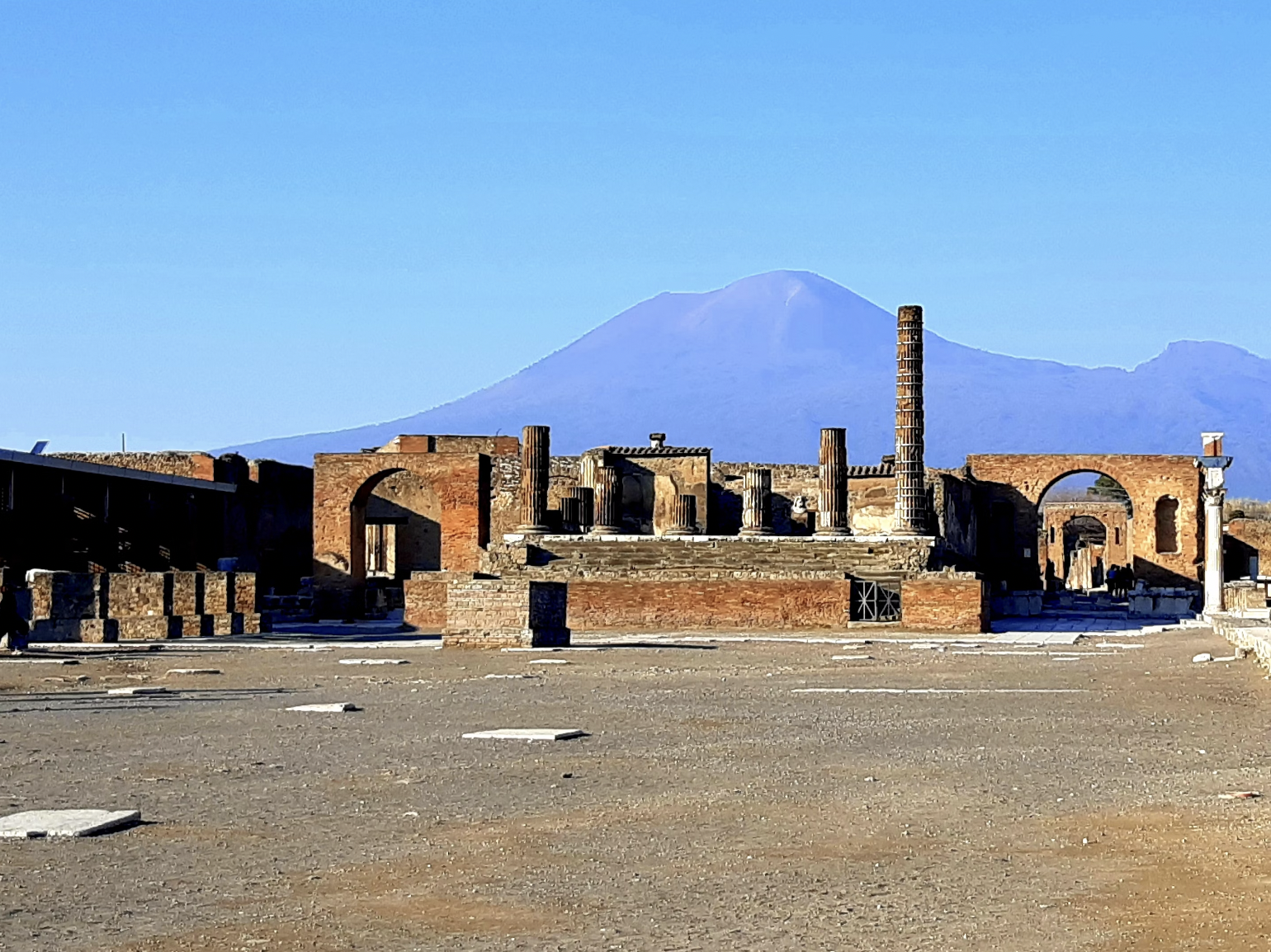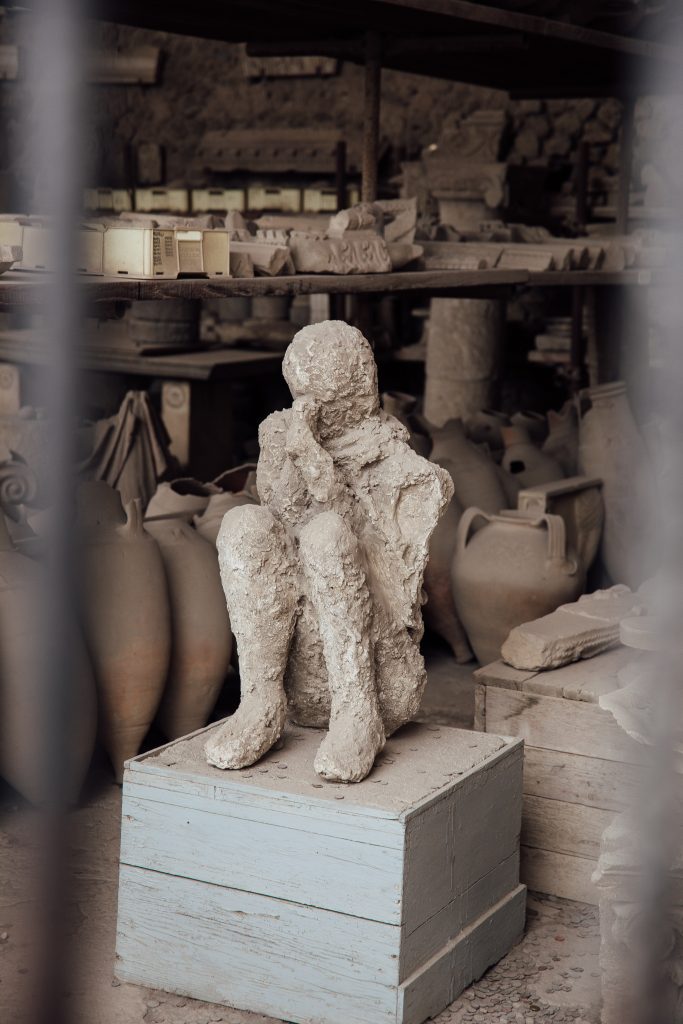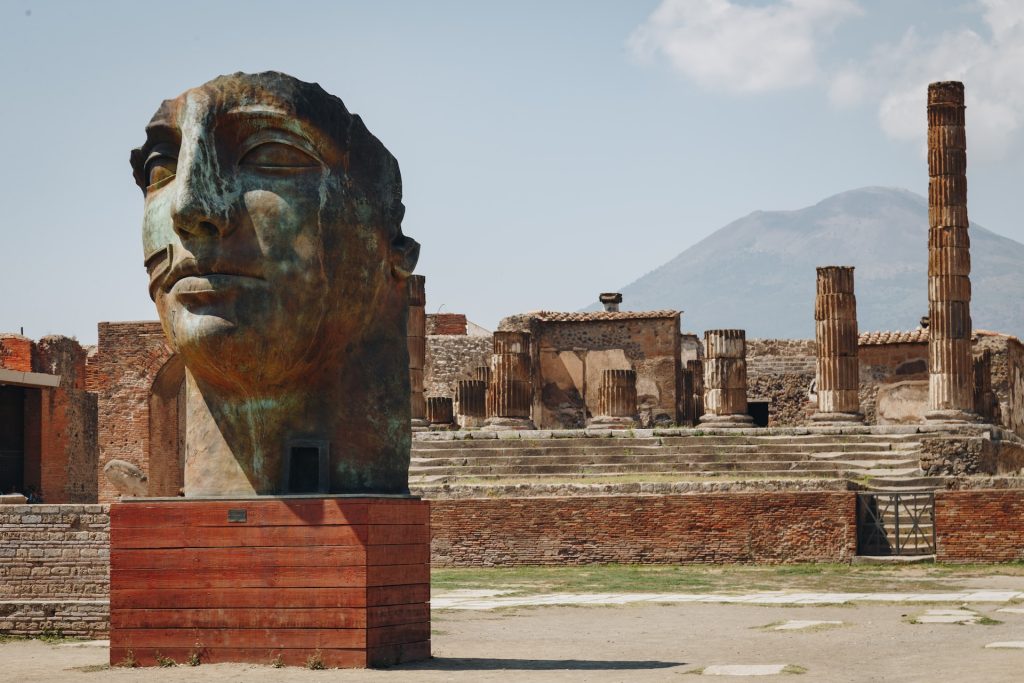
How many years does it take to dull the edge of a disaster? That’s a question you may find yourself pondering as you explore the streets of Pompeii.
Located in southern Italy close to the beautiful city of Naples, Pompeii is one of the world’s great archaeological ruins. Completely buried by a volcanic eruption in 79 A.D., Pompeii preserves a Roman city just as it was almost 2000 years ago and provides an almost eerily absorbing glimpse into what life was like for ordinary people caught up in a natural disaster.
Pompeii is an absolute treasure for anyone with an interest in history or archaeology, and it has taught us so much about life in the Roman Empire. But with all this historic and scientific interest, it’s easy to forget that for the people who lived and died here, it was a genuine tragedy.
One of the most striking things about Pompeii is that it doesn’t allow you to forget that fact. As you explore the beautiful frescoes and mosaics of aristocratic Roman houses and giggle at the lewd acts displayed on the walls of the brothel, you will encounter, over and over again, the plaster casts made by archaeologists to preserve the remains of the people whose bodies were buried in ash. That makes visiting the city a slightly macabre experience, but one that is all the more fascinating for its edge of tragedy.
Drop off your unneeded bags at a Pompeii luggage storage and learn more about some of the untold stories of the city and the lives of the people caught up in a catastrophe they could never have imagined. If nothing else, it will give you a real sense of the scale of the disaster that took place here.
Table of Contents
Where are the bodies?
That’s a question many visitors to Pompeii find themselves asking. The archaeological site is absolutely massive, and you’ll definitely need a map, if not a guided tour, to get around.
The plaster and resin casts of the victims of Pompeii can be found throughout the city. Many are located in the Horrea, just off the town forum or main square close to the main entrance to the ruins. However, you’ll find others in some of the houses throughout the city and more just outside the other entrance to the ruins at Piazza Immacolata.
The Garden of the Fugitives

This is one of the most famous locations in Pompeii to see the victims of the eruption. The Garden of the Fugitives contains the plaster casts of 13 victims of the volcano.
There are both adults and children in the group, leaving archaeologists to believe that they were families trying to escape via the Nocera gate of the city before the pyroclastic flow overtook them. Although we can’t be sure, it’s thought that the remains represent two different families.
Seeing parents and their children caught in the act of trying to escape is a haunting image to carry with you from the killed city. And the fact that the garden has been replanted to closely resemble the beautiful green orchard it would have been 2000 years ago somehow makes it even more haunting to see how these people were cut down in the middle of their lives.
The dog
For animal lovers, there’s something especially affecting about seeing pets overtaken by tragedy. And seeing that the people of Pompeii had pets just like we do is another reminder that 2000 years isn’t all that big of a distance between them and us.
The famous dog buried in ash at Pompeii had a collar on and was clearly somebody’s pet. The theory is that the dog was a watchdog and was chained to a post, making it unable to flee the eruption. That’s not a pleasant thought for any animal lover, but it is a humbling reminder that tragedy doesn’t spare anyone.
Man buried by a rock
One of the more recent discoveries at Pompeii, the remains of this man are not currently on public display. Still, the way he was found is a reminder of all the many stories that have yet to be told from the ruined city.
Unlike the rest of the bodies of Pompeii, which are really just plaster casts of the voids their bodies made in the ash, this man has left an intact skeleton. Lucky enough to escape the pyroclastic flow that killed so many in the city, he was unlucky enough to be killed by a huge rock thrown from the mountain by the eruption, which landed on him. At least it was probably quick.
The two maidens
One of the more intriguing stories from the ruins of Pompeii is this potentially romantic tale.
The casts of these people were made in 1914, and at the time, it was thought to be two women locked in an embrace. However, CT scans and DNA testing have revealed that both victims were, in fact, men. One of the men was only 18 when he died, while the other is thought to have been at least 20. The DNA test also revealed that the men are not father and son, nor are they brothers.
Many people speculate that they may have been male lovers. After all, male homosexuality was fairly widespread during this period in Rome and lacked much of the social stigma it acquired in later times. Whether they were, in fact, lovers or not, this duo and their eternal embrace provide some of the most haunting relics of the city.
The people of Pompeii

Archaeologists have learned a great deal from the remains of the people who once lived in Pompeii. Without them, we wouldn’t know nearly as much as we do about the culture and society of the early Roman Empire.
Maybe that’s the silver lining to what was undeniably a tragic event. Seeing the plaster casts of the victims of the disaster and hearing their stories helps to humanize the tragedy and remind you of the fragile nature of human life. It’s a big part of what makes a visit to this buried Roman city so undeniably haunting.